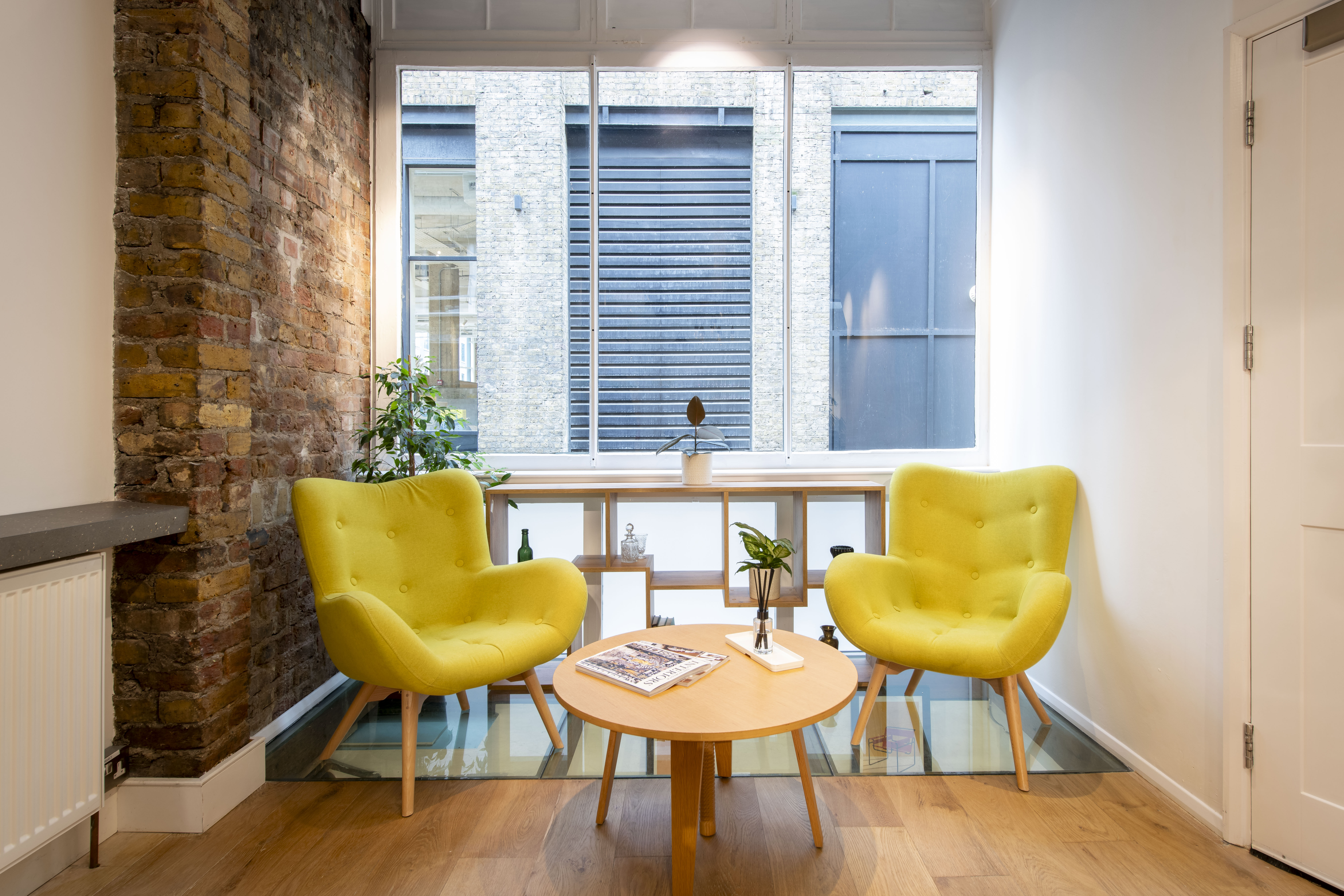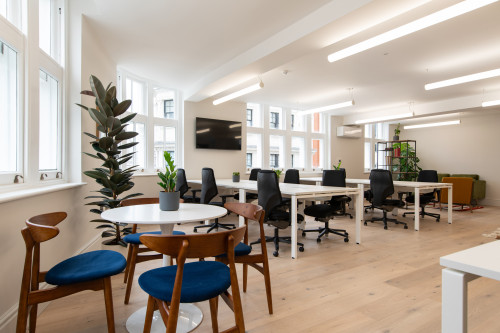Brits work an average of 9 hours per weekday, compared to just 3.5 hours per weekday with their families.[1] Our jobs affect every aspect of our lives.
Our financial status, how we feel when we spend time with our families, stress levels, sleep, physical health, nutrition, social lives, and even our self-worth. So supporting good mental health in the workplace has never been more crucial. And now, the way businesses approach this keystone of the workforce now dictates the talent they can attract.
More than half (55%) of employees want to work for a company that will actively support their mental health, and this percentage has doubled in the last 10 years.[2] For most, the rigidity of the old 9-5 chained to a desk is firmly in the past. Today, flexibility reigns supreme, with remote working, hybrid models, flexible office space and co-working venues are becoming the norm.
Getting it right has a significant effect on our wellbeing, and while this transformation offers numerous advantages – increased productivity, improved work-life balance, and a wider talent pool – getting it wrong can also present some unique challenges.
We delve into the world of mental health at work. We’ll explore strategies for promoting positive mental health, offer tips for managing stress and maintaining a healthy work-life balance, and highlight the importance of social connections, breaks, and the right physical workspace.
The Importance of Mental Wellness
Mental wellbeing isn’t just a buzzword; it’s a crucial component of a happy and productive workforce. According to the World Health Organisation (WHO), “mental health is a state of wellbeing in which an individual realises his or her own abilities, can cope with the normal stresses of life, can work productively and fruitfully, and is able to make a contribution to his or her community.”
When employees struggle with mental health issues like stress, anxiety, or depression, it can lead to decreased productivity, absenteeism, and higher healthcare costs. Conversely, creating a culture that prioritises mental wellbeing can have numerous benefits, including:
Improved creativity and innovation: A thriving workplace environment fosters a space for employees to think in different ways and develop new ideas.
Stronger company culture: When employees feel valued and supported, it promotes a sense of loyalty and belonging.
Increased productivity and engagement: Happy and healthy employees are more likely to be focused, motivated, and productive.
Reduced absenteeism and presenteeism: When employees feel supported and their wellbeing is prioritised, they’re less likely to miss work due to stress or illness.
Choosing the right environment: fostering wellbeing through design
The physical environment we work in has a profound impact on our mental and emotional wellbeing. In a hybrid model of remote and office based working, the lines between the two can blur.
This makes it even more important to consider the design elements that contribute to a space that promotes focus, reduces stress, and fosters overall wellbeing. Here are some key factors to consider when creating a work environment that supports mental wellness:
Natural Light: Studies have shown a strong link between access to natural light and improved mood, sleep quality, and cognitive function. When designing a workspace, prioritise areas with ample natural light from windows or skylights. Supplement natural light with adjustable task lighting to avoid glare and ensure adequate illumination for different activities.
Biophilic Design: Biophilia, the innate human connection with nature, can play a significant role in reducing stress and boosting mood. Incorporate elements of biophilic design by bringing nature indoors. This can include potted plants, living walls, natural materials like wood and stone.
Noise Control and Sound: Constant noise can be a major distraction and stressor. Invest in soundproofing measures by installing acoustic panels on walls and ceilings. Encourage the use of headphones for calls and focus work. Create designated quiet zones within the workspace for focused tasks or relaxation.
Temperature and Air Quality: Maintaining a comfortable temperature and ensuring proper ventilation are crucial for physical and mental wellbeing. Implement an HVAC system that provides consistent temperature control and prioritise regular air filter changes.
Ergonomics: Poor posture can lead to aches, pains, and fatigue. Invest in ergonomic furniture such as adjustable chairs, standing desks, and monitor stands to promote good posture and reduce musculoskeletal strain. Ensure there are comfortable relaxation areas that feel homely with sofas, comfortable chairs for lounging or even a different space for work.
Colour Psychology: Colours can significantly impact mood and focus. Utilise a calming neutral colour palette as a base and incorporate pops of colour to create designated zones for different purposes. For example, calming blue tones can be used in relaxation areas, while stimulating green tones can be used in collaborative workspaces with pops of orange to energise in social areas.
Personalisation: For personalised private office space like Canvas, applying the company branding with design features, furniture choices creates a sense of belonging and personal creative expression. Allowing employees to personalise their own space with a touch of their individuality can create a sense of ownership and comfort. This could include plants, artwork, photos, or other meaningful items.
Movement and Flexibility: Working in a flexible office space means when your needs change, the space can change with you. That goes for the business as a whole right down to the personal needs of the individuals in your team. Whether they want to work at their desk, on the sofas and armchairs in the communal areas, or in breakout spaces around the building and outside areas. There are spaces to suit every mood and activity.
Location: Consider the impact of the workspace’s location on employee wellbeing. Ideally, the office should be situated in a convenient location with easy access to public transportation or parking and bike storage for those who commute.
Green Space: Searching for a location with access to green space within walking distance can also enhance employee wellbeing. Studies have shown that spending time in nature reduces stress, improves mood, and promotes cognitive function. A nearby park, a green courtyard or square near your building can provide employees with a quick escape for a rejuvenating walk or a peaceful lunch break outdoors.

Building a Culture of Wellbeing
Thankfully, the impact of office culture isn’t set in stone. By prioritising wellbeing and fostering a positive and supportive cultural environment, businesses can create a thriving place to work where employees feel valued and empowered. Here are some key things to consider:
Open Communication and Transparency: Encourage open and honest communication from the top down. Employees who feel like they have a voice and their opinions are valued are more likely to feel engaged and invested in the company’s success.
Work-Life Balance and Flexibility: Prioritise work-life balance by offering flexible working arrangements, encouraging breaks, and respecting personal time. When employees feel supported in achieving a healthy work-life balance, they’re more likely to experience reduced stress and improved mental wellbeing, and ultimate be more contented and productive at work.
Recognition and Appreciation: Regularly acknowledge employee contributions and celebrate successes. A simple “thank you” or a public recognition programme can go a long way in boosting morale and making employees feel valued.
Teamwork and Collaboration: Encourage teamwork and collaboration by promoting a sense of shared goals and purpose. Working together towards a common objective can create a sense of belonging and camaraderie, reducing stress and promoting a more positive work environment.
Focus on Strengths: Help employees identify and utilise their strengths. When employees feel like they are playing to their strengths, they are more likely to feel engaged and fulfilled in their roles.
Fun and Social Activities: Organise fun and social activities outside of work hours. This can be anything from team outings to game nights or even a team holiday. Social interaction outside of a work setting helps build relationships and creates a sense of community.
Mental Health Awareness and Support: Promote mental health awareness by providing educational resources and access to mental health professionals. Normalise mental health challenges and create a safe space for employees to seek help if needed.
The Importance of Fun
While elements like work-life balance and open communication are vital, don’t underestimate the power of fun. A work environment that fosters a sense of playfulness and light-heartedness can significantly boost employee wellbeing. Consider incorporating elements of fun into the workday through:
Game Rooms: Designate a space for employees to unwind with games and activities during breaks.
Team Building Activities: Organise fun and engaging team-building activities that encourage collaboration and laughter.
Employee Appreciation Activities: Celebrate birthdays, work anniversaries, or company milestones with fun and celebratory events.
Humour: Encourage a sense of humour and joviality in the workplace. When employees feel comfortable expressing themselves and joking around, it can create a more positive and relaxed atmosphere.
Building a Sanctuary:
By incorporating these strategies, companies can move beyond simply providing a workplace and transform it into a sanctuary for mental wellbeing. A nurturing and supportive office culture fosters employee engagement, creativity, and productivity while protecting and promoting mental health.

Managing Stress in a Hybrid Working Environment
While flexibility offers numerous advantages, it can also blur the lines between work and personal life when you’re working from home at least some of the time. Here are some tips for promoting stress management in a flexible work environment:Set Boundaries: Establish clear boundaries between work hours and personal time. Stick to a schedule, even if you’re working remotely, and resist the urge to check emails after hours.
Create a Dedicated Workspace: Designate a specific area in your home or co-working space for work. This helps create a physical and mental separation between professional and personal life.
Prioritise Breaks: Take regular breaks throughout the day to step away from your screen, move your body, and clear your mind. Consider incorporating short walks, stretches, or mindfulness exercises into your routine.
Practice Mindfulness: Techniques like meditation and deep breathing can be powerful tools for managing stress. There are numerous apps and online resources available to help you get started.
Disconnect to Reconnect: Disconnect from work technology during your breaks and personal holidays, giving yourself the chance to truly de-stress and recharge.




